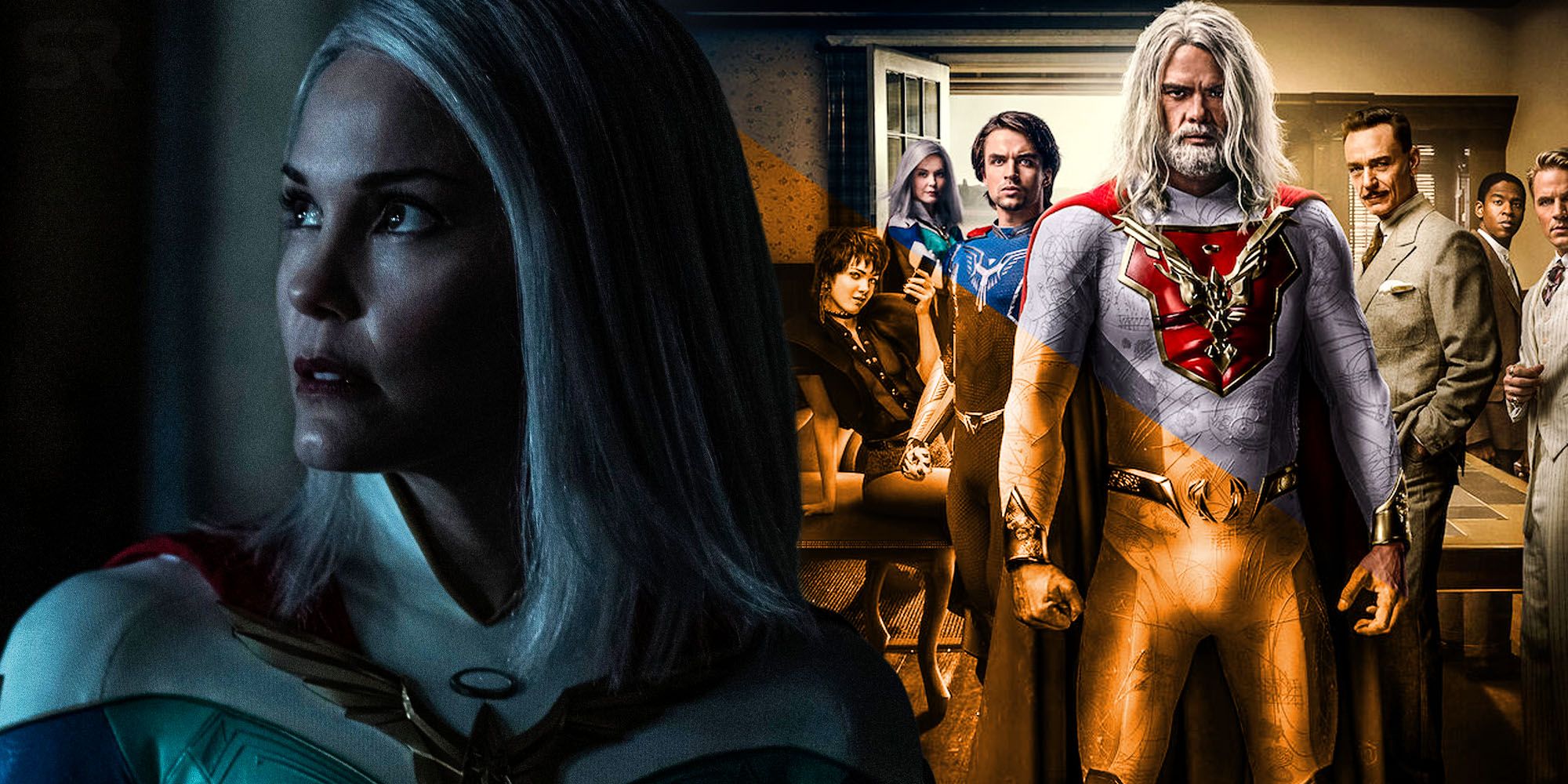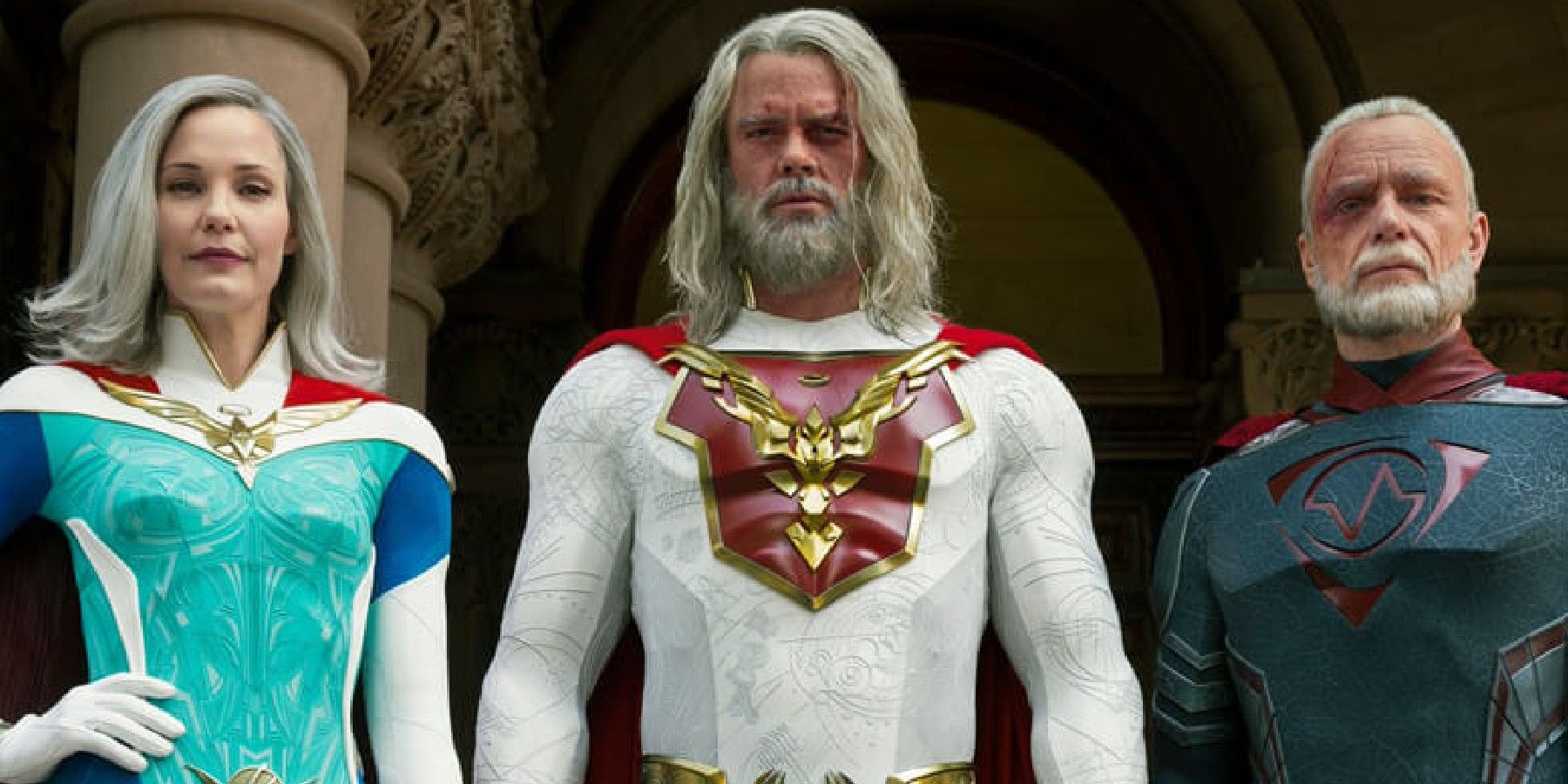Jupiter’s Legacy is a different kind of superhero story, one that spans multiple decades and includes two very different generations, each with their own ideals regarding their interactions with the society they’ve been tasked to protect. Besides the story, characters, and themes, the Netflix series sets itself apart by implementing different aspect ratios throughout season 1 and there are a couple of reasons behind why they keep changing several times over the course of individual episodes.
TV shows typically maintain the same aspect ratio, but Jupiter’s Legacy changes things up a bit. It’s not immediately noticeable at first, but the superhero show, adapted from Mark Millar and Frank Quitely’s comic book series, transitions between one ratio to another at various intervals. Jupiter’s Legacy takes place in the past — circa the late 1920s and early 1930s — and the present day, with each era serving as a contrast to the characters' journeys and ideologies. The different aspect ratios are there to mark the transitions between decades, with its present day scenes being in the HD standard widescreen aspect ratio of 16:9, whereas the scenes set in the past are in fullscreen mode.
The way the series’ creative team chose to differentiate the two was by altering the aspect ratio so that each time period is distinguishable from the other beyond just the fashion and cinematography. The change in aspect ratios is also a nod to the specific real-life eras portrayed in Jupiter’s Legacy. Yes, the creative team likely did want to distinguish the two onscreen. But in reality, the films and TV series from the 1930s had very different aspect ratios than they do now. Back then, movies and shows had an aspect ratio of 1.37:1 (roughly 4:3), which was fullscreen rather than widescreen, with the 16:9 aspect ratio not being widely used as the standard until 2009.
And so, Jupiter’s Legacy was cognizant of these differences and applied these real-life touches to the live-action adaptation, which gives each era more authenticity, as though the audience is actually watching the founding Union members in the past. The result is unique to the superhero genre and allows the two generations of characters to stand apart while co-existing within the overarching narrative. One informs the other and the seamless transitions between the aspect ratios and time periods are a testament to that. Jupiter’s Legacy also finds clever ways to ensure the change between aspect ratios is smooth.
In season 1’s episode seven, for example, Raikou and Walter Sampson (aka, Brainwave) maintain their hold on the mind of Blackstar’s clone and, as their powers shine brighter, the wide aspect ratio slowly begins to shift, with the image widening at the top and bottom so that there is less black space and is more obviously fullscreen. Before the audience knows it, they’re back with the Union’s members on the island in the 1930s without the story missing a single beat. There was clearly a lot of thought put into the different decades present in Jupiter’s Legacy, and the changing aspect ratios were a nice touch that provided an obvious distinction within the story. Whether or not this pattern will continue in a potential season 2 is unclear, but there's still much story left to be told in the past and the aspect ratios should continue changing so long as the decades do.


